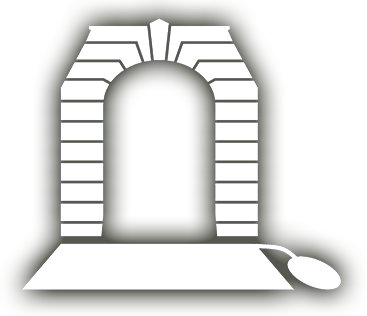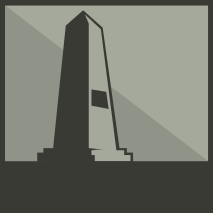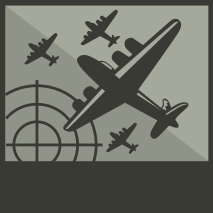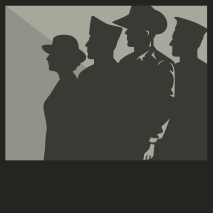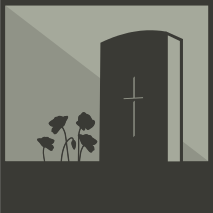Resources
Filter
Media
Document
(Clear)
Use quotes for more accurate searches - e.g., "2/10th infantry battalion"
Showing 50 of 1224 results
-
In the operations against enemy positions at MONT DE MERRIS near STRAZEELE on night 2nd/3rd June, 1918, Private PERKINS was one of a party of three men under Sergeant PULLEN who attacked and captured three German machine guns in action. The first gun was rushed with the bayonet and the crew either killed or captured: the other two guns were attacked with hand grenades and the crews driven off. Throughout the action he showed great courage and dash, and set a fine example to the men of his platoon who witnessed the act.' Source: 'Commonwealth Gazette' No. 23 Date: 12 February 1919
-
'During the attack South of WARFUSEE ABANCOURT near AMIENS, on the morning of the 8th August 1918, this N.C.O.'s section was held up by machine gun fire. He and two other men rushed the post, killed the gunners, and captured the gun, thereby enabling the advance to the objective to continue. He showed great bravery.' Source: 'Commonwealth Gazette' No. 61 Date: 23 May 1919
-
The Lockleys sub-branch of the RSL was formed in July 1935. Ownership of the hall was formally vested in the Lockleys Soldiers’ Memorial Hall Inc in January 1946. For many years the Sub Branch met in the Basement of the Cinema. Clubrooms were later built at the rear of the hall and this building, in combination with the Memorial Hall, was known as the Lockleys Servicemens' Memorial Centre. Ownership of the centre was formally vested in Lockleys Servicemen’s Memorial Centre Inc in February 1954. Ownership of the adjacent land and the cinema complex was transferred for no monetary consideration to the West Torrens Council in October 1991. The Lockleys Sub Branch wound up in 2018 after the last of its Members agreed to transfer their premises to the West Torrens City Council for re-purposing as a part of the re-development of Mellor Reserve. . A memorial is to be erected to commemorate its presence on Mellor Reserve as a key part of the community for 83 years.
-
The Lockleys sub-branch of the RSL was formed in July 1935, and became a tenant in the Memorial Hall / Cinema complex. For many years the Sub Branch met in the Basement of the Cinema, which was enshrined on the Constitution and Rules of the Lockleys Soldiers Memorial Hall Inc. Long time member Laurie Gillespie, 94, recalls that at one stage a poker school used to meet surreptitiously behind the screen of the cinema. Clubrooms were later built at the rear of the hall and this building, became the home of the Lockleys Sub Branch of RSL SA. Ownership of the centre including the Memorial Hall was formally transferred to the Lockleys Servicemen’s Memorial Centre Inc in February 1954. Ownership of the adjacent land and the cinema complex was transferred for no monetary consideration to the West Torrens Council in October 1991 in exchange extensions to the RSL Hall. With age and a diminishing local veteran population, the Lockleys Sub Branch took the decision in 2018 to wind up the Sub Branch when the last of its Members agreed to cease operations. A memorial is to be erected to commemorate its presence on Mellor Reserve as a key part of the community for 83 years.
-
The Lyric Theatre Commencing on Saturday evening 10 October 1925, films were shown in the 360-seat hall and the cinema was known as the Lyric Theatre or Lyric Pictures, (or even more simply as the Lockleys Theatre). From the 1930s to the 1950s the cinema was a focal point of social activity, with a visit to 'the pictures’ on a Saturday night a highlight of the week for many locals. The Windsor / Odeon Cinema years After the acquisition of the lease by B.E. Cunnew and Sons from October 1948 the cinema became the Lockleys Windsor Theatre. At its peak the Windsor group ran cinemas at Brighton and St Morris as well as its two West Torrens cinemas at Lockleys and Hilton. From 1948 Harold Slade was the manager/usher of the Lockleys theatre with Allan Rainey the chief projectionist. In the early 1950s the theatre underwent two substantial redevelopments. The hall was now able to hold 495 patrons. However, as with other cinemas, the coming of television to Adelaide in 1959 immediately affected the theatre’s viability. Despite enjoying some success with occasional showings of Greek and Italian-language films, the theatre closed in February 1963. Over the next thirty years the venue was used only spasmodically. For several years from the mid 1970s the theatre was run by Mr Stephen Buge and operated commercially as the Lockleys Cine Centre. Buge had frequented the theatre in his youth in the 1950s and had vowed to one day manage it. He later recalled that he was married on a Saturday and spent all the next day painting the front of the cinema in preparation for its reopening. During these years the theatre was also used by community groups for fundraising film screenings. In 1992 it underwent a $60,000 upgrade and operated in 1993-2000 as the Lockleys Odeon Star. From July 2000 the theatre was again part of the Windsor cinema group. On 30 August 2012 the Lockleys cinema again closed for the last time.
-
'On 23rd April the 53rd Battery position at MORCHIES was subjected to very heavy shelling, and a large ammunition dump caught fire. it was burning fiercely when Bombardier EDWARDS, at great personal risk, assisted in extinguishing the flames, and helped to save a considerable amount of ammunition.' Source: 'Commonwealth Gazette' No. 189 Date: 8 November 1917 'On 23rd April the 53rd Battery position at Morchies was subjected to very heavy shelling and a large ammunition dump caught fire. It was burning fiercely when Corporal Edwards at a great personal risk, assisted in extinguishing the flames and helped to save a considerable amount of ammunition. Thus winning the Military Medal.' Details from his Mother.
-
Distinguished Conduct Medal 'For conspicuous gallantry and devotion to duty. After the battery officers had been wounded and many casualties sustained by heavy shell fire he took command, and by his splendid example, under very trying conditions, was able to complete the task of bringing the guns into position.' Source: 'Commonwealth Gazette' No. 189 Date: 8 November 1917
-
Military Cross ''At Herleville on 23rd August, 1918, this officer was in charge of the communications of the forward observation party. The forward observing officer was killed, and he at once took his place. Throughout the day, under very hostile fire, he moved about the newly captured positions, sending back important information as to our infantry positions and bearings of hostile batteries which were shelling our new position, and which were at once engaged. He displayed an utter disregard for personal safety, and much infromation of tactical importance was received from him.'' Source: 'Commonwealth Gazette' No. 61 Date: 23 May 1919
-
'From 5th to 12th June 1917 near MESSINES these N.C.O.s and men [6704 W. BERRY, 4315 F. McKENZIE, 4838 J.J. O'BRIEN, 8460 F.E. NELSON, 6317 P.S. CHARLWOOD, 2085 A.W. SIMMONS, 2206 W.W. ARBERY, 3250 K.C. BASSETT, 3800 J.F. GRABHAM] were employed with the Divisional Pack Transport Troop which was used nightly in taking up supplies, water and ammunition to the various Battalion Headquarters. The various convoys came nightly under heavy shell and machine gun fire and their work was carried out in the dark and under trying conditions. In some cases the supplies were taken up to within a few hundred yards from Front Line. These N.C.O.s and men have been selected in order of merit out of the [no. indecipherable] N.C.O.. and men employed as having set an example of coolness under fire and determination in carrying out their duties.'
-
Originally listed as 'No Known Grave' and commemorated at V.C. Corner (Panel No 11), Australian Cemetery, Fromelles; subsequently (2011) identified, and interred in the Fromelles (Pheasant Wood) Military Cemetery, France. Note on Form B103: 'Identification Disc received from Germany. No particulars were afforded except that the soldier is dead. to be reported KILLED IN ACTION FRANCE 19-20th July 16.' Note on file: 'austr. Sold. Russell, A. 54. A.K. Nr. 4299. am 19.7.16. in Gegend Fromelles gefallen.' Note on Red Cross File 2380411: 'Identity disc recd. From Germany and despatched to Next of Kin ... 1.9.1919.' Statement, 3123 Sergeant F. POLDING, 54th Bn (patient, 9th General Hospital, Rouen), 9 November 1916: 'During the attack on Fleurbaix on the 19th July, we had very heavy losses. Many dead bodies were collected after the action and buried. I was informed by several men of the burying party that Russell's body was recovered and buried. I do not, however, remember the name of any particular man of the burying party who told me this.' 'The above name appeared on German death list dated 4-11-16.' Second statement, 4375 Pte E. SCOBLE, 54th Bn (patient, 2nd Birmingham War Hospital, Hollymoor, England), 18 February 1917: 'Arthur Russell's brother William Russell, 2300 54. A.I.F. told him Arthur Russell was killed and buried by Sgt. Allen.'
-
Statement, 2878 Corporal E.E. POULTER, B Company, 60th Bn, 29 January 1917: 'The last time I saw him was in No Man's Land about 150 yds. from our line. He was shot through the side and the bullet evidently lodged in his stomach as he doubled up and fell. We could not hold the ground. We went over with 1100 men and 63 men answered the roll call.'
-
Red Cross File No 2940705 has statements 4226 Pte L. HANNA, B Company, 54th Bn (former prisoner of war), 30 December 1918: 'On morning of 20th July 1916 at Fleurbaix I was alongside him when he was shot dead by sniper. Hit in Head (eye). We were then in Enemy's second line trench. They got in behind us into their 1st line and we were cut off. I was hit through helmet by same man immediately after but not hurt. We were taken Prisoners of War about 1 hour later. His body would be left in trench. I did not know his Christian name.' 3511A W.D. CARR, 54th Bn, 24 December 1918: 'In the morning between 8 and 9 o'clock I saw him assisting [1909 H.W.] Bilbow with a machine gun - when he was shot through the right eye either by sniper or machine gun bullet - not shrapnel, as he was killed instantly. It was in a quickly dug trench. We were captured shortly afterwards, so I know nothing as to his burial.' 1909 Lance Corporal W.H. BILLOW (sic), 13 January 1919: 'He was not killed going over the trenches but after he got over in the Germans' second line on the morning of the 20th. I was standing shoulder to shoulder with him up to the moment he was killed. He was hot by a sniper from behind, the bullet passing through his head. He had been working all night with me, trying to build up the trenches. It happened at Fleurbaix ... I took his paybook and his identification disc and was forced to give them up to the Germans with my own paybook.' 1841 S. TONKINS, 54th Bn, 28 August 1917: 'Pte Wildman was killed by shrapnel, I saw him lying dead on the ground in the German trenches, on July 20th at Armentieres.'
-
Red Cross File No 1420704 Statements from witnesses: 2818 J. ELLIOTT, 56th Bn, 6 November 1916: 'He came from Bathurst, N.S. Wales, and was buried in a cemetery between Sailly and Estairs, Bac-St.-Maur Road. I saw his grave there.' (this seems incongruous given his remains were recovered from the Pheasant Wood site) 3330 Pte P.G. HUGHES (patient, 23rd General Hospital, Etaples), 6 November 1916: 'James was killed by shell: I did not see it happen but I saw him lying afterwards. I think he was buried at the top of Pinney's Avenue in the cemetery.' 2780 Lance Corporal B.H. PHILLIPS, 56th Bn, '[2705 C.W.] Johnston was a L.M. Gunner and James was in A. Company. We made an attack on the 19th and were driven back to our own lines, and these two and three others were killed by the same shell in our trench. James' head was practically blown off. I - a stretcher bearer - was on the next bay and was called in. James and Johnston were both taken out and buried in a Cemetery behind the lines. I think the cemetery at the mouth of "V.C. Avenue" near Fleurbaix. I knew Johnston very well indeed, but James not so well.' 1704 Pte G.W. MURRAY, 56th Bn (patient, 9th General Hospital, Rouen), 16 November 1916: 'I saw this man killed by a piece of shell hitting him on the head on the 20th July near Fromelles. I heard afterwards that he was buried.' Originally listed as 'No Known Grave' and commemorated at V.C. Corner Australian Cemetery, Fromelles; subsequently (2010) identified, and interred in the Fromelles (Pheasant Wood) Military Cemetery, France.
-
An impressive ceremony marked the un- veiling on Sunday by Brigadier-General Leane of a fallen soldiers' memorial at Magill. Thirty-three of the men who en- listed from the district made the supreme sacrifice. The monument stands in a portion of the Magill School grounds. It is an anistically designed marble stone, and bears the names of the dead. The money for tbe work was raised by public subscription at the suggestion of the Magill Progressive Association, the sec- retary of which (Mr. I. Simcock) did most of the organising work. A large crowd witnessed the service. A cordon was formed around the memorial by a party of returned soldiers from Magill, under W. O.Walker. D.C.M., M.M. and bar, and a company of senior cadets, in charge of Lieutenant Rowe. The chairman of tbe Burnside District Council (Mr. J. A. Harper) said a flagpole and a Union Jack had been presented to the school by three local rejected volun- teers, Messrs. J. Dalby, W. Cooke. and F. Warner. The pole had been placed in the scbool yard immediately to the rear of tbe memorial. In handing them over to the school Mr. Harper referred to the great things for which the Union Jack, stood. The schoolmaster (Mr. Scott) accepted the gift. Brigadier-General Leane, in unveiling the monument, said in the war the Australian had proved himself both a fine soldier and a man. (Applause.) France had paid her mark of respect to the gallant men from the Commonwealth at Amiens, and had proved that she placed the Australian soldiers on an equality with her own (Applause.) In Whitehall, London, there was a Cenotaph in memory of the glorious dead of England and the Dominions, and whenever a man passed it he raised his hat. It had struck him that afternoon in connection with the Magill memorial that it would be a good thing if the chil- dren of the school in passing in and out paid similar tribute to the departed men who fought for them. (Applause.) As the covering from the memorial was removed the "Last Post" was sounded. Mr. W. A. Hamilton, M.P., on behalf of the Minister of Edncabon, accepted the gift. The Speaker of the Assembly (Hon. F. W. Coneybeer) said the memorial would be a record for all time of the heroic sacrifices made by some of the towns- people of Magill, and it would stand as a perpetual reminder of the devotion of Aus- tralia's sons. During the afternoon selections were played by the Magill Band, and floral tri- butes to the departed men were placed upon the monument, wich was prepared by Messrs. Maddaford & Polkinghorne, of Adelaide.
-
The long awaited news of the re-lease, as a P.O.W, of their younger son, Warrant Officer Rhys Roberts, R.A.A.F., has been received by Mr and Mrs K. R. Roberts., of Kadina. On Monday, a cabled message received stated that he had arrived in Liverpool, England, on 15th and was "fit, well and cheerful." This message must be most assuring to his parents after his varied experiences, for more than once his life has been in jeopardy. He was taken a prisoner of war in October, 1942, and previous to that, was shot down in Tobruk. When captured at El Alemein, he was the only survivor of his plane, and had received injuries when bailing out of the burning machine. After being a patient in a front line hospital, he was conveyed to Austria via Greece and Italy, and was a prisoner in three different camps in Germany. His final place of custody was Stalag No 3 in East Prussia, and during transit there, had three days in Berlin. During the time spent in this camp he lectured on sheep and wool, his education proving beneficial to him. He commenced his early studies at St. Peters College, Adelaide, and, on returning to the Kadina High School, won a scholarship for Roseworthy College where he studied for three years. When he will arrive home is not yet known. Kadina and Wallaroo Tines Fri 22 Sep 1940
-
'For conspicuous gallantry in action near Le Catelet, on 30th September 1918. He led a patrol of five men in face of heavy machine gun and rifle fire, and succeeded in locating the enemy position. By skilful handling of his patrol, he obtained information of the greatest value, which enabled his company to advance more than 1,000 yards, and to clear up an obscure and difficult situation on the left flank of the brigade.' Recommendation date: 7 October 1918 Source: 'Commonwealth Gazette' No. 10 Date: 29 January 1920
-
https://vwma.org.au/collections/home-page-stories/letter-from-lone-pine
-
https://nominal-rolls.dva.gov.au/veteran?id=1040023&c=WW2#R
-
https://www.625squadron.com/
-
https://recordsearch.naa.gov.au/SearchNRetrieve/Interface/ViewImage.aspx?B=4265644
-
https://en.wikipedia.org/wiki/HMAS_Australia_(D84)
-
https://vwma.org.au/collections/home-page-stories/harold-carseldine
-
https://www.awm.gov.au/collection/R1946739
-
https://johnknifton.com/tag/avro-lancaster/
-
https://vwma.org.au/collections/home-page-stories/a-tale-of-two-soldiers
-
https://vwma.org.au/research/home-page-archives/mystery-of-the-black-cat
-
http://recordsearch.naa.gov.au/SearchNRetrieve/Interface/ViewImage.aspx?B=3453704
-
http://biography.senate.gov.au/james-rowell/
-
https://vwma.org.au/collections/home-page-stories/diary-of-a-destroyer
-
https://recordsearch.naa.gov.au/SearchNRetrieve/Interface/ViewImage.aspx?B=3554428
-
https://trove.nla.gov.au/newspaper/article/11399022
-
https://www.theguardian.com/australia-news/2017/sep/29/us-museum-under-fire-over-display-of-skull-of-australian-soldier
-
http://aircrewremembered.com/taylor-james-william.html
-
https://vwma.org.au/collections/home-page-stories/the-worst-day-in-australian-military-history
-
https://vwma.org.au/collections/home-page-stories/malaya-borneo-veterans-day
-
https://recordsearch.naa.gov.au/SearchNRetrieve/Interface/ViewImage.aspx?B=8076035
-
https://trove.nla.gov.au/newspaper/article/154716918?searchTerm=%22addington%22%20AND%20%22avenue%22%20%20%20%20%20%20%20%20%20%20%20%20&searchLimits=#
-
https://recordsearch.naa.gov.au/SearchNRetrieve/Interface/ViewImage.aspx?B=7366997
-
https://recordsearch.naa.gov.au/SearchNRetrieve/Interface/ViewImage.aspx?B=3460991
-
https://recordsearch.naa.gov.au/SearchNRetrieve/Interface/ViewImage.aspx?B=3212570
-
https://www.awm.gov.au/collection/R1602740
-
https://s3-ap-southeast-2.amazonaws.com/awm-media/collection/RCDIG1068741/document/5515697.PDF
-
'On 25th April, 1915, during operations near Gaba Tepe, for conspicuous courage and initiative in returning from the firing line under heavy fire, collecting reinforcements, and assisting in leading a successful bayonet charge to the top of a hill, which was eventually held against great odds.' Source: 'London Gazette' No. 6544 Date: 3 July 1915
-
'At FLEURBAIX, FRANCE, during the successful raid carried out by 9th Battalion on the night 1st/2nd July, 1916 in company with his Officer was first into enemy trenches where they tackled 21 Germans in a large dug-out. In spite of the fact that rifle and revolver fire was directed at them from the dug-out these two went in returning the enemy fire eventually killing seven and disarming and capturing the remainder. Throughout the raid this N.C.O. proved absolutely fearless and set a splendid example of gallantry. He has already been awarded the Distinguished Conduct Medal for gallantry on GALLIPOLI.' Source: 'Commonwealth Gazette' No. 184 Date: 14 December 1916
-
‘For conspicuous gallantry in action near BULLECOURT on 3rd. May 1917. In the face of severe shell and M.G fire from the enemy they kept their guns in action supporting our bomb attacks most successfully in co-operation with the Trench Mortars’. Rec by M. Smyth, Major-General, 2nd. Australian Div.
-
Military Medal Recommendation:- 'On the 31st July, 1917, near MESSINES, this N.C.O. was in charge of the bearers working between a Relay Post and a car loading point, a distance of about 4,000 yards. The area between was continually under hostile artillery fire and evacuation was partly by means of hand carriage and partly by trench trampoline. From before dawn until relieved at night, this N.C.O. was continually in the open, directing and encouraging the men under him. On three occasions he acted as a stretcher bearer, when men ran short and completed the whole journey. He showed throughout a total disregard for personal danger and a high devotion to duty. He showed all through a steady and invincible determination and displayed a capacity for leadership in extreme danger. His example was a splendid one for his men.'
-
From Sydney's diary, his Battalion relieved the 19th Batttalion on Thursday 21 March but he gave no indication of location. Referral to the War Diaries of the 7th Brigade held by the Australian War Memorial indicate they were in camp at Canteen Corner and moved into the line near the villages of Romarin and Kortepyp just inside the Belgian border with France. The entry for Tuesday 26 March, their 2nd in the front line, stated it was 'very lively. Fritz shooting bombs nearly all night. Had to fall back for a while'. On Saturday 30 March Sydney recorded 'Fritz's plane bought by gunfire fell about 300 years from my dugout. Officer taken prisoner'. Sydney then tell that he 'went out with patrol. Spent several hours in no mans land. Very wet and got into swamp on the bank of the River Lys. No sign of Fritz so came in again. Wet through and mud up to knees'. On Tuesday 2 April Sydney recorded it was their 12th day in the line and that the Battalion was relieved by the South Lancashires from the Somme. Following the diary entries, the 26th Battalion spent the night in a camp and on Wednesday 3 April moved to Meteren en route for the Somme. On Thursday 4 April they left Meteren for Caestre 'to load gear on trains working all night'. Sydney records 'it was very wet and slushy'. They left Caestre at 6 am on Friday 5 April arriving in Amiens at 8 pm. Then then marched to Allonville where the spent the night. The next day they marched to La Neuville which Sydney described as 'a small village, left in a hurry by the population as everything was left behind, even cows and a few tame rabbits in out billet'. On Sunday 7 April the Battalion marched to Baizieux to spend some days in support. Sydney states there were 'no billets and have to put up this time in the trench and there are no places to shelter anyway'. On Thursday 11 April Sydney recorded that '3 Hun planes brought down by gun fire. Had no time to go over and see as we were ready to move up the line'. Friday 12 April was the Battalions 'first night in the front line about 4 miles from Albert. Very quiet. Heavy bombardment on our left but nothing our way'. On Friday 19 April Sydney recorded that they were at Franvillers having 'moved back a couple of miles for a couple of days spell. Living in holes in the side of a hill. Light fall of snow during the day. Very cold'. He comments on the 'terrible scarcity for matches' and then on Monday 22 April says he 'heard there were matches at Heilly about 3 miles away. Walked over and managed to get 4 boxes. Going up in line tonight on fatigue'. Wednesday 24 April saw them back in the front line from 11 pm. On 26 April they 'bombarded Fritz's trench with mortars. Knocked out his machine guns'. they were relieved from the front line on Monday 29 April, went into support for a day and then were 'marched out for a couple of days spell'. They were back in reserve on Saturday 4 May and 'had to dig bivies to camp for the night. Dug into bank alongside a railway. 9.2 gun on line shaking hell out of us'. On Friday 10 May Sydney and his mates left for the line arriving 4 pm and went into reserves. Again they had to build bivies, this time in the trench. Sydney records that they went into reserves near Ribemont and 'met my old friend the Queensland mosquito'. He also comments 'I think all the vermin in the world is around this part, not including Huns'. Compiled by Ian Cousens
-
From the 7th Brigade diaries, the 26th Battalion were back in line at Frenchcourt on 14/15 June. When an inspection was carried out at Frenchcourt on 20 June the Battalion consisted of 40 officers and 867 other ranks. They were described as being very smart. Returning to Sydney's dairy, he recorded on Thursday 27 June that they 'took over line at Villers-Bretonneux. D Company in reserve for 10 days living in dugout. Trey Bon'. It was Friday 12 July before they were 'sent out of the line for a rest'. He must have been back in the line on Wednesday 17 July as he noted that the 'Brits hopped over, took Fritz's line, went about 1500 yards and that 'D Coy had 40 odd casualties, 3 killed'. Saturday 20 July was the 4th Brigade Sports and Sydney noted that he 'met half Toowoomba' and names eight people. That was the last entry Sydney made in his diary. Compiled by Ian Cousens
-
Sydney's diary entries cease on 20 July. From the War Diaries of the 7th Brigade held by the Australian War Memorial, the 26th Battalion was in reserve at Glisy and Blangy from 1 August before moving up into the line on 7 August. On 8 August the Battle of Amiens commenced with an attack launched at 4.20 am. The 26th Battalion, working with a section of tanks, was on the right flank and were to advance along the north side of the railway line towards Marcelcave. Objectives ironically included Card Copse where Sydney was initially buried. Reports state there was heavy fog and visibility was restricted to 10 yards for about 2 hours. A large number of casualties were due to men being caught in their own rolling barrage. From reports in the Australian Red Cross Society Wounded and Missing Enquiry Bureau Files, Sydney was in D Coy and died instantaneously after being hit by pieces of a shell. Pte H Webley 6167 of B Coy 26th Battalion stated 'Casualty happened in the morning of 8-8-18 just after the hop over when still in action'. Pte Webley was wounded by the same shell. Sydney was initially buried on the 9th August in Card Copse British Cemetery one mile North West of Marcelcave before being re-interred in Villers-Bretonneux Military Cemetery on 31st March 1920. Sydney is also commemorated on the Mothers Memorial in East Creek Park and the Soldiers Memorial Hall, both in Toowoomba. Sydney's younger brother, Stanley Clifford Cousens #816 15th Battalion also served in WW1 and was killed in action on 9th August 1916 two years earlier at Pozieres. Compiled by Ian Cousens
-
On the evening of 14th July 1944, with the D Day invasion in full swing, a massive air effort was being mounted to disrupt German transport links. Having taken off from Binbrock (Lincolnshire-UK) on July 14, 1944, around 9:38 pm, for a bombing mission on the Révigny-sur-Ornain (Meuse) railroad, Lancaster ME755 AR-Z was shot down by a night fighter on the 15th. July 1944 around 02:05, near Chevillon Haute Marne in eastern France.. Only two crew members managed to escape: F / Sgt Brian Francis RAFTERY, Wireless Operator, RAAF, Sgt David WADE, AIr Gunner, of the RAF. The rest died in the crash and are buried at Chevillon Communal Cemetery. ALLAN, ALEXANDER, Sergeant, 562335, RAFVR, Flight Engineer, DICKERSON, KEVIN LESLIE THOMAS, Flight Sergeant, 421578, RAAF, Age 20, Bomb Aimer JEFFRIES, FREDERICK, Flight Sergeant, 1323904, RAFVR, Age 33, Navigator KILSBY, HORACE SIDNEY, Sergeant, 1575038, RAFVR, Age 21, Air Gunner VAUGHAN, WILLIAM ALAN HENRY, Pilot Officer, 421774, RAAF, Age 25, Pilot
Page 14 of 25
This page is supported by a grant from the ANZAC Day Commemoration Council

